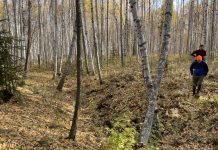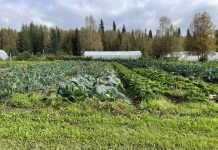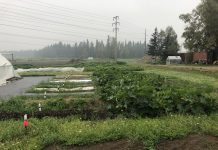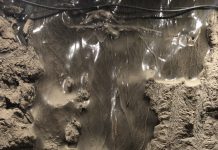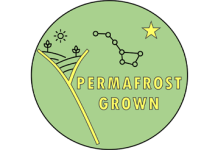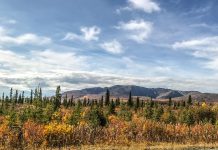Open Access Government produces compelling and informative news, publications, eBooks, and academic research articles for the public and private sector looking at health, diseases & conditions, workplace, research & innovation, digital transformation, government policy, environment, agriculture, energy, transport and more.
Home 2025
Archives
Cryptic ground ice conditions in permafrost and northern agricultural expansion
Permafrost conditions are often heterogeneous and concealed beneath the surface, becoming evident only when thawing occurs. Melissa Ward Jones discusses these challenges and highlights a new publication that identifies ice wedges for the first time in the Yukon-Kuskokwim Delta region of Alaska.
Measuring permafrost thaw subsidence in agricultural fields in Alaska
Melissa Ward Jones, a Research Assistant Professor at the Water and Environmental Research Center (WERC) of the University of Alaska Fairbanks, discusses research focused on understanding the interactions of permafrost thaw and agriculture.
Impacts of land clearing on areas containing permafrost
Melissa Ward Jones from the University of Alaska Fairbanks explores the impacts of land clearing on areas with permafrost.
First insights into global permafrost-agroecosystems and recommendations for policymakers
Melissa Ward Jones discusses a recent paper published in Arctic, Antarctic, and Alpine Research of the first global study on permafrost-agroecosystems, published by members of the International Permafrost Association Permafrost-agroecosystem Action Group.
When common recommendations for cultivating in cold soils inadvertently thaw permafrost
Melissa Ward Jones, details when common recommendations for cultivating in cold soils inadvertently thaw permafrost, starting with the challenges of cultivating at high latitudes.
Permafrost grown: The heterogeneity of permafrost conditions
Melissa Ward Jones, from the University of Alaska Fairbanks, explains the heterogeneity of permafrost conditions and how it can impact agriculture.
Dr. Melissa Ward Jones: Permafrost scientist and geographer
Here we explore Dr. Melissa Ward Jones' research on permafrost systems in the continuous permafrost zone of the Arctic and permafrost-agriculture interactions primarily in the discontinuous permafrost zone of Alaska.
Permafrost grown: Investigating permafrost-agriculture interactions in Alaska
Here, we learn about Dr. Melissa Ward Jones, who leads a transdisciplinary team of researchers at the University of Alaska Fairbanks, co-producing knowledge with farmers to understand these unique agricultural systems better.

